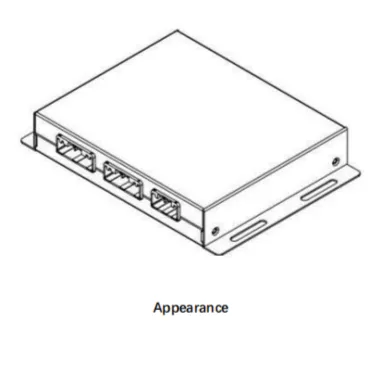Elektrikli Depolama Pili Kurulumu için Temel Rehberlik
Enerji bağımsızlığına ve sürdürülebilirliğe giden yol, ev sahiplerini sıklıkla elektrikli depolama pili sistemi kurmayı düşünmeye yönlendirir. Bu dönüştürücü teknoloji, güvenilir güç depolama , elektrik faturalarında azalma ve daha küçük bir karbon ayak izi sunar. Ancak, bu önemli yatırımı yapmadan önce enerji ihtiyaçlarınıza ve hedeflerinize uygun bilinçli bir karar almanız için dikkatle değerlendirilmesi gereken kritik faktörler vardır.
Yenilenebilir enerji dünyası gelişirken, elektrik depolama pilleri modern enerji yönetiminin temel taşı haline gelmiştir. Bu gelişmiş sistemler sadece elektrik depolamanın ötesinde, evlerimizde ve iş yerlerimizde enerjiyi düşünme ve tüketme biçimimizde temel bir değişimi temsil eder. Pil kurulumunun temel yönlerini anlamak, bu karmaşık alanda emin adımlarla ilerlemenize yardımcı olacaktır.
Pil Kurulumu için Teknik Hususlar
Sistem Kapasitesi ve Güç Gereksinimleri
Elektrik depolama pili sisteminin doğru boyutunu belirlemek hayati öneme sahiptir. Öncelikle hane halkınızın ortalama günlük enerji tüketim desenlerini analiz edin. Tepe tüketim saatlerini, mevsimsel değişimleri ve enerji ihtiyaçlarınızda gelecekte olabilecek değişiklikleri göz önünde bulundurun. Uygun boyutlandırılmış bir sistem, fazla kapasitenin neden olacağı gereksiz maliyetlerden kaçınırken güç gereksinimlerinizi karşılayacak yeterli kapasiteye sahip olmalıdır.
Profesyonel kurulumcular, elektrik yük profilinizi değerlendirerek uygun bir batarya kapasitesi önerecektir. Bu işlem genellikle faturalarınızı gözden geçirerek, yedek güç gerektiren kritik yükleri belirlemekle ve enerji bağımsızlığı hedeflerinizi anlamakla ilgilidir. Günlük enerji tüketiminin yanı sıra aynı zamanda en yüksek güç taleplerini de göz önünde bulundurarak boyutlandırma işleminin optimal performans sağlayacak şekilde yapılması gerekir.
Kurulum Yeri ve Alan Gereksinimleri
Elektrikli depolama bataryanızın fiziksel konumlandırılması dikkatli planlama gerektirir. Bu sistemlerin verimli ve güvenli çalışabilmesi için temiz, kuru ve sıcaklık kontrollü bir ortam gereklidir. Kurulumlar genellikle garajlarda, bodrum katlarda veya özel olarak ayrılmış yardımcı odalarda yapılır. Konum, bakım için kolay erişilebilir olmalı, aynı zamanda aşırı hava koşullarından ve doğrudan güneş ışığından korunmalıdır.
Uzay gereksinimleri, sistem boyutuna ve yapılandırmasına bağlı olarak değişir. Havalandırma ve bakım erişim için bataryayı çevreleyen yeterli boşluk sağlayın. Montaj yüzeyi, daha büyük kurulumlar için birkaç yüz lirayı aştığı için, pil sisteminin önemli ağırlığını taşıyabilmelidir.

Finansal Analiz ve Yatırım Planlaması
Başlangıç Maliyetleri ve Uzun vadeli tasarruf
Elektrikli depolama bataryasının kurulması önemli bir ön yatırımı temsil eder. Toplam maliyet sadece bataryayı değil, aynı zamanda kurulum işçilerini, izinleri ve elektrik sisteminin mümkün olan güncellemelerini de içerir. Bununla birlikte, bu başlangıç masrafı, düşük kamu hizmeti faturaları, kullanım süresi oranının optimize edilmesi ve potansiyel enerji arbitraj fırsatları yoluyla potansiyel uzun vadeli tasarruflarla tartılmalıdır.
Federal vergi kredileri, eyalet indirimleri ve kamu hizmetleri programları da dahil olmak üzere mevcut finansal teşvikleri düşünün. Bu teşvikler, toplam yatırım maliyetini önemli ölçüde azaltabilir. Mevcut elektrik fiyatlarını, öngörülen enerji maliyetlerinin artışını ve pil sisteminin tahmini ömrünü analiz ederek yatırımınızdan beklenen getiriyi hesaplayın.
Bakım ve işletme maliyetleri
Elektrikli depolama pilleri genellikle bakım gerektirmez olsa da, düzenli olarak denetlenmesi ve servis edilmesi gerekir. Düzenli bakım kontrollerinin, olası bileşen değiştirmelerinin ve bataryaların kullanım ömrünün sonunda değiştirilmesinin maliyetleri. Çoğu modern sistem, performansı takip etmeye ve potansiyel sorunları erken belirlemeye yardımcı olan izleme yeteneklerini içerir.
İşletme maliyetleri ayrıca ek sigorta gereksinimlerini ve ev sahibinin sigorta primlerinde olası artışları da içerir. Pil sahibi olmanın tüm finansal sonuçlarını anlamak için sigorta şirketinizle bu yönleri tartışın.
Mevzuata ve Güvenliğe Uygunluk
Bina kuralları ve izinler
Kurulum başlamadan önce yerel inşaat kurallarına uyulduğundan emin olun ve gerekli izinleri alın. Elektrik tesisatı ve enerji depolama sistemleri için farklı yetki alanlarının değişik gereksinimleri vardır. Yerel yönetmeliklere aşina olan nitelikli bir yüklenici ile çalışmak bu gereksinimler arasında etkin bir şekilde ilerlemenize yardımcı olacaktır. İzin süreci elektrik denetimlerini, yangın güvenliği incelemelerini ve yapısal değerlendirmeleri içerebilir.
Bazı belediyeler elektrikli depolama pilleri için özel güvenlik özellikleri veya kurulum yöntemleri gerektirir. Bunlara özel devre kesiciler, uyarı işaretleri ve acil durum müdahale planları dahil olabilir. Bu gereksinimlere uymak sisteminizin hem güvenliği hem de yasal olarak işletilmesi açısından esastır.
Güvenlik standartları ve sertifikaları
Tanınmış güvenlik standartlarını karşılayan ve uygun sertifikalara sahip bir elektrikli depolama bataryası sistemi seçin. UL listeleri ve sektör standartlarına uygunluğu gösteren diğer ilgili güvenlik işaretlerini arayın. Kurulum, uygun havalandırma, yangın önleme tedbirleri ve acil durumda kapatma imkanı içermelidir.
Sertifikalı teknisyenler tarafından yapılan profesyonel kurulum, tüm güvenlik protokollerinin uygulanmasını ve sistemin evinizin elektrik altyapısı ile doğru şekilde entegre edilmesini sağlar. Bu, uygun topraklama, aşırı akım koruma ve mevcut güvenlik sistemleri ile entegrasyonu da kapsar.
Mevcut Sistemlerle Entegrasyon
Şebeke Bağlantısı Gereksinimleri
Elektrikli depolama bataryanızın şebeke ile nasıl etkileşime gireceğini anlamak hayati öneme sahiptir. Çoğu kurulum, fayda sağlayıcınızla koordinasyon gerektirir ve özel bağlantı anlaşmaları gerekebilir. Sistem, uygun şebeke bağlantılı ekipmanları içermeli ve güç kalitesi ve güvenlik açısından fayda sağlayıcının teknik özelliklerine uymalıdır.
Bazı işletmeler, batarya depolama sistemine sahip müşteriler için özel programlar veya fiyat yapıları sunmaktadır. Bu fırsatları araştırın ve kurulumunuzun mevcut avantajlardan yararlanabilmesini ve tüm şebeke bağlantısı gerekliliklerini karşılamasını sağlayın.
Güneş ve Akıllı Sistemler Evine Entegrasyon
Eğer güneş paneliniz varsa ya da kurmayı planlıyorsanız, elektrik depolama bataryınızın güneş sisteminizle uyumlu olduğundan emin olun. Modern batarya sistemleri, enerji yakalama ve kullanımını optimize etmek için güneş kurulumlarıyla entegre olabilmektedir. Batarya sisteminin mevcut ev otomasyonu veya enerji yönetimi sistemleriyle nasıl çalışacağını değerlendirin.
Bu entegrasyon, sorunsuz bir işlemeyi sağlayarak her iki sistemin avantajlarını en verimli şekilde kullanmalıdır. Bu, akıllı şarj özellikleri, yüklenme saatlerinin otomasyonu ve uzaktan izleme yetenekleri gibi özellikleri içerebilir.
Sıkça Sorulan Sorular
Elektrik depolama bataryaları genellikle ne kadar dayanır?
Çoğu modern elektrik depolama pili, kullanım şekline ve bakıma bağlı olarak 10 ila 15 yıl arası çalışacak şekilde tasarlanmıştır. Sistemin ömrü, uygun kurulum, düzenli bakım ve doğru şarj döngüleri ile optimize edilebilir. Bazı üreticiler, belirli bir performans seviyesini 10 yıla kadar garanti altına almaktadır.
Bir elektrik depolama pilini kendim kurabilir miyim?
Karmaşık elektrik işleri ve güvenlik nedenleriyle, kullanıcıların kendilerinin kurulum yapması önerilmez ve birçok bölgede yasa dışı olabilir. Uzman kurulum, sistemin doğru entegrasyonunu, yerel yönetmeliklere uygunluğu ve garanti kapsamının korunmasını sağlar. Seçtiğiniz pil sistemiyle deneyimli, sertifikalı kurucularla çalışmanız her zaman en iyisidir.
Elektrik kesintisi sırasında ne olur?
Doğru şekilde kurulmuş bir elektrikli depolama pili, şebeke kesintileri sırasında yedek güç sağlayabilir. Sistemin otomatik transfer anahtarı şebekeden ayrılır ve temel devrelerinizi çalıştırır. Yedek güç süresi, pil kapasitenize ve enerji kullanımınıza bağlıdır. Bazı sistemler, güneş panelleriyle birlikte kullanıldığında sonsuza kadar güç sağlayacak şekilde yapılandırılabilir.

